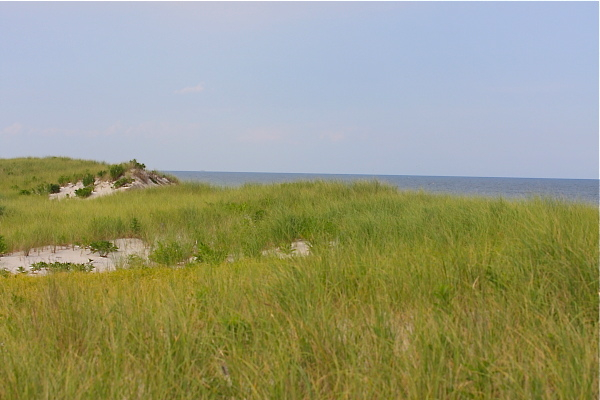From Defunding State Parks To A Partnership With Donald Trump – They Know No Shame
Trump Calls Climate Change A Hoax, Pledges To Dismantle EPA
NJ Audubon Remains His Partner
I want to close out two issues I’ve been writing about for some time now.
I) Stealing State Parks Funding and Still Lying About It
The Bergen Record finally published a story on funding cuts for the maintenance of NJ State Parks and how the Keep It Green Coalition – led by NJ Audubon and their Foundation and corporate friends – duped the voters into slashing those funds, despite a known $400 million backlog in capital maintenance projects, see:
It is a complex story to tell, but it all boils down to this:
Some environmentalists say the amendment had an unintended but severe impact on the Natural and Historic Resources capital budget. The budget had been replenished each year from the same tax, a dedication secured in a prior, 2006 voter-approved constitutional amendment. That amendment was to provide a “reliable and stable source of funding” that would enable the DEP to make “long-term investments in the state park system,” according to a 2013 draft of the state’s Comprehensive Outdoor Recreation Plan.
It provided about $15 million annually, and would have doubled to $32 million in 2016. ...
Mark Texel, head of the New Jersey Division of Parks and Forestry, called it a “massive blow” and said in a Facebook post soon after the vote that it was “the darkest day I have faced in my professional career.” [**Note: he called it “worse than Sandy“]
“We had a plan to really tackle some of these major capital projects that had been deferred for many, many years,” Texel said. “And we were making progress. Suddenly now our capital budget is having the legs cut out from underneath it. … It was disappointing, I admit. I was very disappointed.”
[***Update: Here is Texel’s full statement: (boldface mine)
“As the Director of the NJ State Park Service now coping with the reality that our entire Parks capital budget will be completely eliminated beginning July 1, 2015 as a result of the YES vote I can say this is the darkest day I have faced in my professional career. Worse than Superstorm Sandy. 440,000+ acres of preserved open space, 52 historic sites, 39 parks — used by 8 million visitors each year — all managed by my agency and now with no funding plan in place for stewardship beginning in just 7 months. This is not a bad reality TV show. This is New Jersey’s Inconvenient Truth hidden from voters throughout this campaign.”
Finally, despite the continuing lies and pushback to undermine and divert attention from the nasty truth, the press held the culprits at Keep It Green accountable:
Bill Wolfe, director of the non-profit Public Employees for Environmental Responsibility, said he didn’t believe that voters in 2014 knew this would happen.
He accused NJ Keep It Green of “intentionally, knowingly” stripping state parks of capital funding to finance Green Acres so they wouldn’t have to ask voters to approve a bond. That, he said, let open space groups avoid a public brawl with Governor Christie, who has demanded no new debt be placed on taxpayers. The coalition, he said, “didn’t have the spine to fight for the money.”
Keep It Green was finally forced to respond, and they did so by continuing a pattern of lies, spin and omission – here’s a gem: If KIG knew there was a $400 million backlog, how can they still defend stealing $32 million that was previously Constitutionally dedicated to State parks maintenance?
Ed Potosnak, an empty suit that can only blow smoke, digs in deeper. He simply denies the reality of the fact that his Open Space ballot measure stole $32 million/year of dedicated State parks funding:
Ed Potosnak, chairman of Keep It Green and executive director of the NJ League of Conservation Voters, said the idea that the amendment had stripped money from the parks was a “smoke and mirrors argument” by the Christie administration.
“It’s just because they’re not prioritizing it,” Potosnak said. “That money is going other places … if they thought it was important, they’d put it towards the parks. It’s not because of [the constitutional amendment]. We’re seeing that slip because the administration has other priorities. And … they don’t want to say flat out, ‘We have other priorities.’ They’re going to point the finger.”
For environmental groups to buy into that story is “shameful,” Potosnak said. “Stand up for full funding — don’t point the finger at other factors and play into [the state’s] narrative that is false.”
I am perhaps the Christie administration’s harshest and most consistent environmental critic, but they are right on this one. It’s no false narrative:, it’s the truth, backed by budget evidence:
Brian Murray, Christie’s press secretary, said the 2014 amendment hampered DEP efforts to address capital improvements and left it with “fewer funds to use for parks and other crucial environmental protection efforts.”
The “other priorities” Potosnak refers to are DEP’s shifting million of dollars to restore cuts from other environmental programs – like clean water and toxic site cleanup. Those critical environmental funds also were stolen by KIG’s self serving “rob Peter to pay Paul” open space scheme. Those were in addition to the Parks maintenance money.
The Record followed the story up with a good editorial today, see:
I rarely get named in editorials, so vindicated, must note:
But the Christie administration and even environmentalists normally not aligned with the governor point to a 2014 referendum in which voters overwhelmingly endorsed a plan to use money from the corporate business tax to buy open space under the Green Acres program. Some of that money had been used for park cleanup and maintenance.
The success of the referendum measure was not surprising. New Jersey voters traditionally have supported initiatives to buy and preserve land on all levels of government. But as Bill Wolfe, the director of Public Employees for Environmental Responsibility, told The Record, voters probably did not know the consequences of their vote.
The reason that voters did not know the consequences of their vote was due to a $1 million funded PR campaign of lies and deception by self serving conservation groups and their spineless and unprincipled “leaders” like Ed Potosnak and Ms. Mooij of NJ Audubon.
But the reality is actually far worse –
These conservation groups are funded by elite foundations and corporations. Their professionals report to elite boards and elite members.
Their “advocacy” work reflects the economic and political interests and ideology of those elites.
In this case, the defunding of State Parks fits their elite agenda.
First of all, the elites of the KIG Coalition don’t rely on State Parks for outdoor recreation and they don’t care about what they perceive as the riff-raff that do.
Second, defunding of State Parks creates a financial crisis that reinforces a privatization and commercialization agenda for State lands that elites are ideologically supportive of:
As to how the state could bridge the budget gap, Texel, the Division of Parks and Forestry head, points to the public/private partnerships meant to monetize parks — like the gazebo built at Barnegat Lighthouse State Park to play host to wedding ceremonies, or the caterer who calls Sussex County’s Waterloo Village home. He also suggested corporate sponsorships, used effectively by the National Park Service, as a money source.
Last, the Open Space program fits their elite and corporate ideological conservation agenda in several ways: 1) private wealthy landowners benefit from public subsidies, which amount to another regressive upward transfer of wealth. 2) At the same time, diversion of DEP funds to open space shrinks State government and DEP regulatory programs are slashed. 3) Groups like NJ Audubon “partner” with DEP and receive DEP funds and favors, e.g. just look at the Sparta Mountain logging debate.
Which brings us to our second close out issue:
II) Donald Trump Promises To Abandon The Paris Climate Accords; Kill Obama EPA Clean Power Plan; Expand Oil, Fracking & Coal Production; and Slash Environmental Regulations – Yet NJ Audubon Maintains A Partnership With Him
A small sample of the insane Trump policy agenda: (see this and this and this)
What would a corporate partner with NJ Audubon have to do before Audubon terminated the partnership?
Just what would it take?
What would Donald Trump have to do for the leaders at NJ Audubon to publicly distance themselves from him and sever their partnership?
TRUMP NATIONAL GOLF CLUB SIGNS 10-YEAR AGREEMENT FOR WILDLIFE CONSERVATION ON ITS BEDMINSTER, NJ COURSE
These are the warped and cowardly low lifes that populate elite conservation groups.



